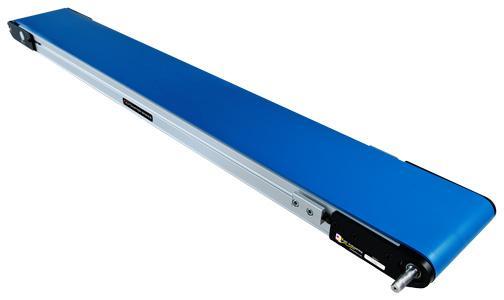Nowadays, the most prominent conveyor equipment that is used is a belt conveyor. There are two major ways in which motive force is transferred from the motor to the conveyor system.
The following is a discussion of these kinds of conveyor equipment and their characteristics:
- Friction Driven Conveyor Equipment. This group of conveyor equipment maximizes the friction generated by the belt and pulley to move the products on the conveyor. There are two types of friction driven conveyor equipment according to their system design:
i.Flat Belt Conveyor Equipment. This type of conveyor equipment relies on rubberized and reinforced material for strength as well as friction. It is also characterized by high efficiency, because of its inherent flexibility, low creep resistance and high elasticity. The grooves in the flat belts are key to its performance.
ii.V-Belt Conveyor Equipment. This type of conveyor equipment utilizes V shaped wedges on the belt surface to keep the belt in the track grooves. These V wedges increase friction on the pulleys as the low tension is multiplied. Most often, V Belt conveyors are used for heavy duty loads, especially those with high starting weights.
b. Positive Drive Conveyor Equipment. This group of conveyor equipment is moved by the conveyor belt’s teeth interlocking with the gear teeth of the pulley. As the gears turn, the belt moves alongside it.
In utilizing either friction driven or positive drive conveyor equipment, one of the major causes of breakdowns is misalignment. The key to the proper working conveyor equipment is that the belt aligns with the pulley that drives the equipment. If the belt is misaligned, the belt may become damaged and may result in equipment failure. Aside from the belt being damaged, the pulley can become misaligned and even cracked, which can result in long term failure and replacement.










